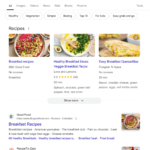Did you hear the one about the U.S. government agency that attracts millions to its social media accounts?
It takes puns to new heights.
Yes, it’s the Transportation Security Administration. That’s TSA for short, though the lines at airport security checkpoints don’t always seem to reflect that brevity. It’s also a serious business given TSA was created to thwart terrorist attacks and other nefarious actions after Sept. 11, 2001.
At Content Marketing World 2023, Emily Bonilla-Pieton took the audience behind the scenes of TSA’s social media strategy with her presentation, Travel Tips and Dad Joke Hits: How To Maximize Your Team To Produce Results While Staying Punny.
Injecting humor into content can surprise and delight an audience expecting staid, by-the-book content. Emily says that strategy has paid off for TSA, where she’s worked for 15 years and currently serves as the acting social media branch manager in the Office of Strategic Communications and Public Affairs at TSA in the Department of Homeland Security (evidently, TSA doesn’t like short titles either).
Squeezing the TSA dad-joke juice
Passenger to TSA: “Can I carry a suitcase full of fresh oranges?”
TSA: “Orange ya glad the answer is yes?!”

TSA uses that so-called dad joke to give a fresh squeeze to a standard reply on TSA’s Instagram AMA (ask me anything), which they operate in real time for about 10 hours every day.
But TSA goes beyond the easy joke and, in this Instagram post, crafts this well-written pun built on a video shared by a passenger. It’s received over 4 million likes in the past two years.
A ramp worker plays the children’s rock-paper-scissors game with a passenger on a plane. The caption artfully captures the essence of the video with a serious reminder about what’s allowed in carry-on luggage:
You’re in luck here. You can’t lose with this info!
It’s all fun and games until you pack your scissors over 4 inches. That’s right, if your scissors are too big, they won’t make the cut. Generally, rocks are good to go in a carry-on depending on size or weight, but your paper always wins there.
We want you to take trips, not chances! You can definitely do better than 2 out of 3 when packing for your next travel adventure. To be in the know before you go, check out our “What Can I Bring?” tool. Shoot on up to the link in our bio for all the deets.
#RockPaperScissors #Plane #Games
🎥 credit: @ bricheeseyy
These posts exemplify TSA’s strategy for Instagram, which boasts 1.4 million followers. “We entertained, we engaged, and then we did a shameless plug on top, all of that,” Emily says.
“Our method for the (rock-paper-scissors) post was actually let’s grab their attention with a catchy video, a catchy trending sound, and then catch the attention of the audience with our opening liner. And then of course, educate them,” Emily explains, noting the CTA to visit the link and bio.
Relatability is at the crux of TSA’s social media strategy.
“We like to speak to folks like you’re speaking to your best friend. So, it’s very personable. We’re encouraged to share our information and our content, and we’re truly authentic,” Emily says.
But the TSA team can’t also rest on that strategy alone. Though it follows a long-term strategy with evergreen content, it also reacts to trending topics. “We stay on top of the ever-changing algorithm,” Emily says. “Things can go viral, and we’re floating, and we’re like, ‘Yes!’ and the next day it could bomb.”
Keeping up with the comments — positive and negative — also keeps the team on its toes. “You have one whole hour (after posting) to demonstrate to Instagram that you are not a bot, that you are driving this account organically,” Emily says.
Singing different tunes
However, what works for Instagram doesn’t necessarily work for Facebook, X, YouTube, and LinkedIn. “It would be very easy to just cut and paste one content on each platform, but we don’t do that,” Emily says.
They tailor their voice and content to the age demographic and primary locations of their followers on each platform.
On Facebook, TSA has about 98,000 followers (less than 10% of its Instagram account) and they skew older. So, TSA tells stories, shares hiring events, and posts job descriptions to help Grandma get her grandson out of the basement and into a nice federal job.
TSA also uses Facebook to talk to people, usually 55 and older, about traveling with firearms in a non-critical way. “Our approach is, ‘Oops, you might have not traveled for a while. Let’s check your bags first because you don’t want to accidentally forget your firearm at the checkpoint.’”
Given TSA is a federal agency and the drama around X, they don’t devote a lot of budget to manage the account. About two employees are dedicated to over 258,000 followers and they focus heavily on TSA’s existing stories and news releases.
“We’re creating relationships with beat reporters because we do rely on them to tell our story (on X) because it doesn’t cost us any money.” Emily says.
TSA’s LinkedIn presence has grown significantly in recent years, with over 148,000 followers today. The target demographic is people between 25 and 34 years old. Though they use their page to highlight roles within TSA, Emily says LinkedIn offers another invaluable use — a place to feature agency initiatives that don’t fit on other social platforms, such as innovative technology news.
“I can’t tell you how many times someone’s like, ‘We want your 1.2 million followers on Instagram to know about our technology. Would you be interested in that on Instagram?’” Emily says.
“We politely say, ‘You know, where that would fit is on LinkedIn.’ We kind of use LinkedIn as our scapegoat, and when we show them our numbers. We end up having happy customers.”
TSA’s YouTube channel has about 95,000 subscribers. Over two dozen playlists with dozens of videos tell the TSA story, from employees on the job and their testimonials to travel tips and items people tried to bring through TSA. It also includes the TSA Kids series. “Kids are speaking to other kids on basic travel tips,” says Emily, whose children help voice some of the videos.
They also host town halls and other live events on YouTube. And since the federal government agency can’t be on TikTok, they plop in videos to YouTube Shorts the day after they find success on Instagram.
Peanut butter is a liquid and other team news
The TSA social media team is built on flexibility. Emily is the only team member based in Washington, D.C. Others on the remote team work from their home states, including California, Minnesota, and Florida.
It was a colleague in Idaho who texted Emily at 9 p.m. one night. He wanted to jump on a conversation on X about whether TSA considered peanut butter a liquid. She said yes, and he entered the debate with the definitive, “Yes, peanut butter is considered a liquid.”
“This was our opportunity to demonstrate that anything you can spill, pour, pump, or spread, is considered a liquid. It needs to be 3.4 ounces or less to be carried on (a plane) and anything greater should be checked in, (luggage),” she says.
They highlighted how people tried to hide their vapes and firearms inside peanut butter, and the conversation trended a bit for a few weeks. Now, every National Peanut Butter Day and other times of the year, they rehash it all. “It’s the gift that keeps on giving,” Emily says.
The award-winning social media team learned on the job about a lot more than peanut butter. Only one team member arrived with a social media background. All the others first worked in the field at their local airport. And they’re united in their work, trusting each other to step in when burnout becomes a reality. “After all, social media is designed to get us hooked. It’s like gambling, not always healthy,” Emily says.
But the social media team doesn’t operate in a silo. They act as social listening agents for the TSA media ops team and help distract the media with a better story when a negative one pops up.
Still, having all this fun with content doesn’t mean they don’t take the numbers seriously. One team member reports the numbers every week, detailing their key performance indicators as well as the dollar equivalent of the organic exposure their posts and interactions would have cost had they purchased them.
The social media team’s strategy is working in more than one way. “For some strange reason, our leadership, the administrator, the agency, they love this, and they’re like, ‘They know what they’re doing. We’re going to let them just continue on.’”
Now, that’s how you squeeze dry government information into sweet and tangy sips of content marketing.
HANDPICKED RELATED CONTENT:
Cover image by Joseph Kalinowski/Content Marketing Institute



